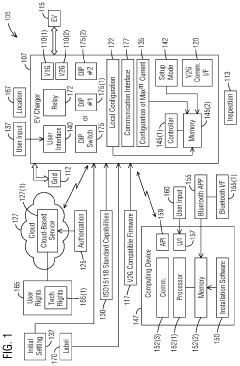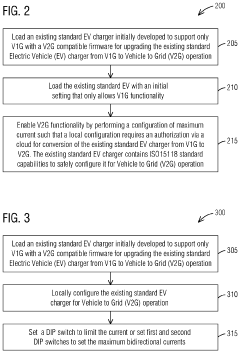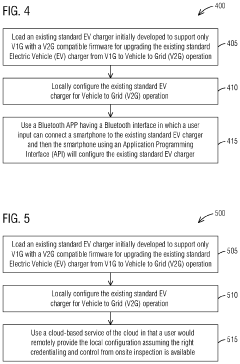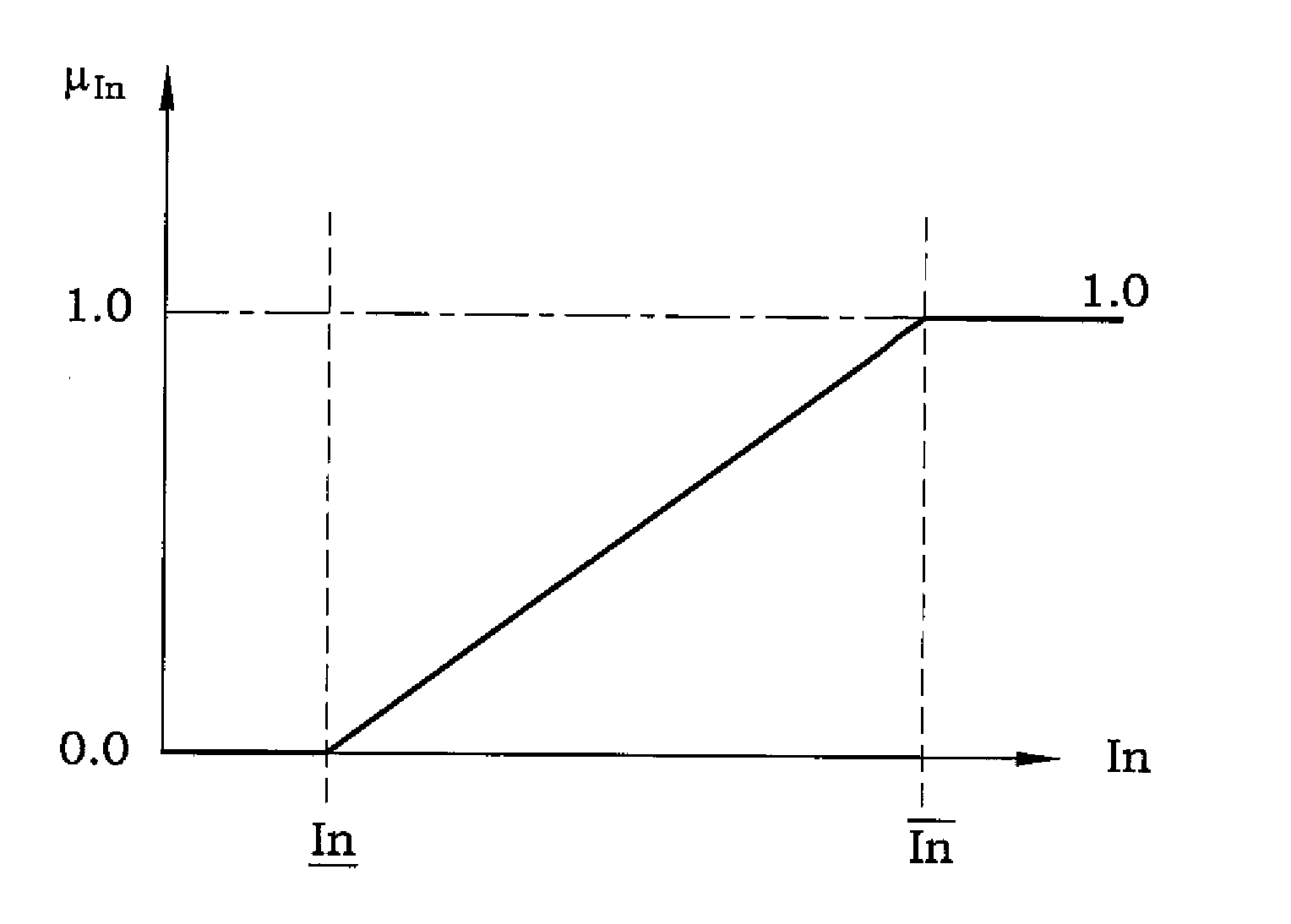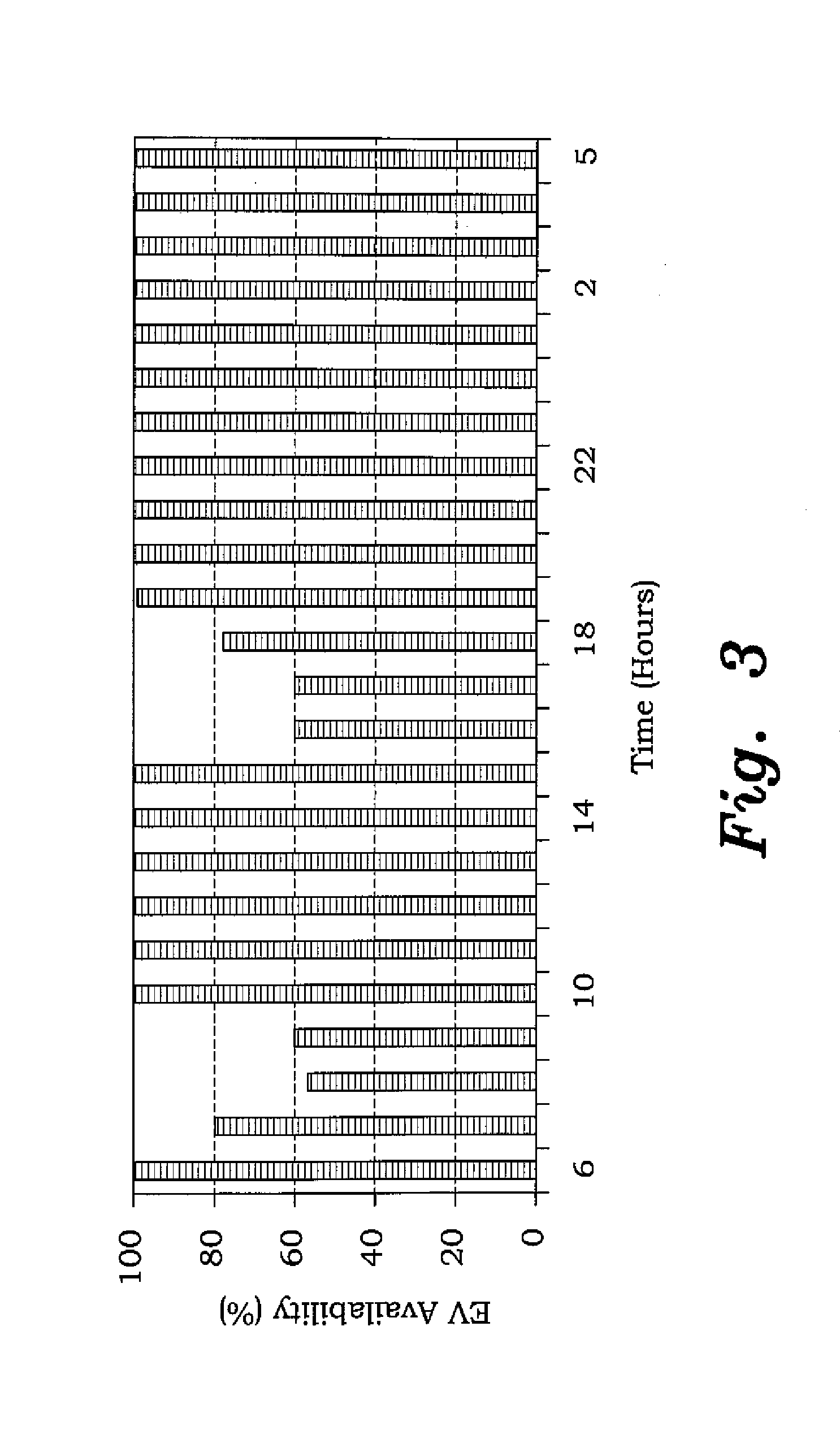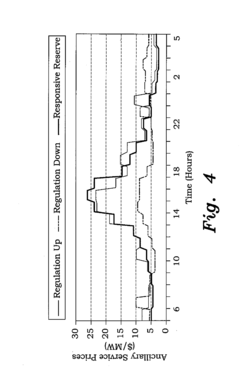V2G's Evolution in New and Emerging Markets
AUG 8, 20259 MIN READ
Generate Your Research Report Instantly with AI Agent
Patsnap Eureka helps you evaluate technical feasibility & market potential.
V2G Background and Objectives
Vehicle-to-Grid (V2G) technology has emerged as a promising solution at the intersection of renewable energy integration and electric vehicle (EV) adoption. The concept of V2G dates back to the late 1990s, but it has gained significant traction in recent years due to the rapid growth of the EV market and the increasing need for grid flexibility.
The primary objective of V2G technology is to enable bidirectional power flow between electric vehicles and the power grid. This allows EVs to not only consume electricity but also feed it back to the grid when needed, effectively turning them into mobile energy storage units. As the global energy landscape shifts towards renewable sources, V2G presents an opportunity to address the intermittency challenges associated with solar and wind power.
In new and emerging markets, V2G technology is evolving to meet unique local needs and overcome specific challenges. These markets often face issues such as unreliable grid infrastructure, limited charging facilities, and the need for rapid electrification of transportation. The evolution of V2G in these contexts aims to provide innovative solutions that can leapfrog traditional energy systems and create more resilient and sustainable power networks.
One of the key trends driving V2G's evolution is the increasing focus on smart grid technologies and the Internet of Things (IoT). These advancements enable more sophisticated communication between vehicles, charging stations, and grid operators, allowing for real-time optimization of energy flows. In emerging markets, this trend is particularly significant as it can help overcome infrastructure limitations and improve overall grid stability.
Another important aspect of V2G's evolution is the development of new business models and regulatory frameworks. As the technology matures, stakeholders in new markets are exploring innovative ways to incentivize EV owners to participate in V2G programs. This includes time-of-use pricing, demand response initiatives, and even the concept of "energy as a service" where EV batteries can be utilized as distributed energy resources.
The evolution of V2G in new and emerging markets also encompasses advancements in battery technology. Improved battery chemistries and management systems are extending the lifespan of EV batteries, making them more suitable for grid services without compromising vehicle performance. This is particularly crucial in markets where the initial cost of EVs is a significant barrier to adoption.
As V2G technology continues to evolve, its potential to transform energy systems in new and emerging markets becomes increasingly apparent. The objectives extend beyond mere grid stabilization to include fostering energy independence, reducing carbon emissions, and creating new economic opportunities in the clean energy sector. The path forward for V2G in these markets will likely involve a combination of technological innovation, policy support, and collaborative efforts among various stakeholders to realize its full potential.
The primary objective of V2G technology is to enable bidirectional power flow between electric vehicles and the power grid. This allows EVs to not only consume electricity but also feed it back to the grid when needed, effectively turning them into mobile energy storage units. As the global energy landscape shifts towards renewable sources, V2G presents an opportunity to address the intermittency challenges associated with solar and wind power.
In new and emerging markets, V2G technology is evolving to meet unique local needs and overcome specific challenges. These markets often face issues such as unreliable grid infrastructure, limited charging facilities, and the need for rapid electrification of transportation. The evolution of V2G in these contexts aims to provide innovative solutions that can leapfrog traditional energy systems and create more resilient and sustainable power networks.
One of the key trends driving V2G's evolution is the increasing focus on smart grid technologies and the Internet of Things (IoT). These advancements enable more sophisticated communication between vehicles, charging stations, and grid operators, allowing for real-time optimization of energy flows. In emerging markets, this trend is particularly significant as it can help overcome infrastructure limitations and improve overall grid stability.
Another important aspect of V2G's evolution is the development of new business models and regulatory frameworks. As the technology matures, stakeholders in new markets are exploring innovative ways to incentivize EV owners to participate in V2G programs. This includes time-of-use pricing, demand response initiatives, and even the concept of "energy as a service" where EV batteries can be utilized as distributed energy resources.
The evolution of V2G in new and emerging markets also encompasses advancements in battery technology. Improved battery chemistries and management systems are extending the lifespan of EV batteries, making them more suitable for grid services without compromising vehicle performance. This is particularly crucial in markets where the initial cost of EVs is a significant barrier to adoption.
As V2G technology continues to evolve, its potential to transform energy systems in new and emerging markets becomes increasingly apparent. The objectives extend beyond mere grid stabilization to include fostering energy independence, reducing carbon emissions, and creating new economic opportunities in the clean energy sector. The path forward for V2G in these markets will likely involve a combination of technological innovation, policy support, and collaborative efforts among various stakeholders to realize its full potential.
V2G Market Demand Analysis
The market demand for Vehicle-to-Grid (V2G) technology in new and emerging markets is experiencing significant growth, driven by the increasing adoption of electric vehicles (EVs) and the need for grid stability. As these markets rapidly electrify their transportation sectors, V2G presents a unique opportunity to leverage EV batteries as distributed energy resources.
In emerging economies, particularly in Asia and Africa, the demand for V2G is closely tied to the expansion of renewable energy integration and the development of smart grid infrastructure. These regions often face challenges with grid reliability and capacity, making V2G an attractive solution for load balancing and peak shaving. The potential for V2G to provide backup power during outages is especially valuable in areas with unstable electricity supply.
Latin American countries are showing increasing interest in V2G as they seek to modernize their energy systems and reduce dependence on fossil fuels. Brazil, for instance, has been exploring V2G pilots to support its growing EV market and enhance grid resilience. The region's focus on sustainable urban development is creating opportunities for V2G in smart city initiatives.
In the Middle East, oil-rich nations are diversifying their economies and investing heavily in renewable energy. V2G aligns with their vision of creating sustainable, technology-driven cities. The United Arab Emirates and Saudi Arabia are at the forefront, integrating V2G concepts into their ambitious smart city projects.
The market potential for V2G in these emerging regions is substantial. As EV adoption accelerates, the number of potential V2G-enabled vehicles is expected to grow exponentially. This growth is supported by government initiatives promoting clean energy and smart grid technologies.
However, the demand for V2G in new markets faces several challenges. These include the need for significant infrastructure investments, regulatory frameworks that enable V2G participation in energy markets, and consumer education about the benefits of V2G. Additionally, the varying levels of grid modernization across different regions will impact the speed of V2G adoption.
Despite these challenges, the long-term outlook for V2G demand in new and emerging markets remains positive. As these economies continue to develop and prioritize sustainable energy solutions, V2G is poised to play a crucial role in their energy strategies. The technology's ability to provide grid services, reduce electricity costs, and support the integration of renewable energy sources makes it an attractive option for both utilities and consumers in these rapidly evolving markets.
In emerging economies, particularly in Asia and Africa, the demand for V2G is closely tied to the expansion of renewable energy integration and the development of smart grid infrastructure. These regions often face challenges with grid reliability and capacity, making V2G an attractive solution for load balancing and peak shaving. The potential for V2G to provide backup power during outages is especially valuable in areas with unstable electricity supply.
Latin American countries are showing increasing interest in V2G as they seek to modernize their energy systems and reduce dependence on fossil fuels. Brazil, for instance, has been exploring V2G pilots to support its growing EV market and enhance grid resilience. The region's focus on sustainable urban development is creating opportunities for V2G in smart city initiatives.
In the Middle East, oil-rich nations are diversifying their economies and investing heavily in renewable energy. V2G aligns with their vision of creating sustainable, technology-driven cities. The United Arab Emirates and Saudi Arabia are at the forefront, integrating V2G concepts into their ambitious smart city projects.
The market potential for V2G in these emerging regions is substantial. As EV adoption accelerates, the number of potential V2G-enabled vehicles is expected to grow exponentially. This growth is supported by government initiatives promoting clean energy and smart grid technologies.
However, the demand for V2G in new markets faces several challenges. These include the need for significant infrastructure investments, regulatory frameworks that enable V2G participation in energy markets, and consumer education about the benefits of V2G. Additionally, the varying levels of grid modernization across different regions will impact the speed of V2G adoption.
Despite these challenges, the long-term outlook for V2G demand in new and emerging markets remains positive. As these economies continue to develop and prioritize sustainable energy solutions, V2G is poised to play a crucial role in their energy strategies. The technology's ability to provide grid services, reduce electricity costs, and support the integration of renewable energy sources makes it an attractive option for both utilities and consumers in these rapidly evolving markets.
V2G Technical Challenges
Vehicle-to-Grid (V2G) technology faces several significant technical challenges as it evolves in new and emerging markets. One of the primary hurdles is the development of robust and efficient bidirectional charging systems. These systems must be capable of managing power flow in both directions seamlessly, ensuring that vehicles can not only draw power from the grid but also feed it back when required. This bidirectional functionality demands sophisticated power electronics and control algorithms to maintain grid stability and protect both the vehicle's battery and the electrical infrastructure.
Another critical challenge lies in the standardization of V2G protocols and communication interfaces. As the technology spreads across different regions and markets, there is a pressing need for unified standards to ensure interoperability between various vehicle models, charging stations, and grid systems. The lack of standardization can lead to fragmented markets and slow adoption rates, hindering the widespread implementation of V2G technology.
Battery degradation is a significant concern in V2G systems. The frequent charging and discharging cycles associated with V2G operations can potentially accelerate battery wear, reducing the overall lifespan of electric vehicle batteries. Developing advanced battery management systems and optimizing charging strategies to minimize degradation while maximizing grid services is a complex technical challenge that requires ongoing research and innovation.
Grid integration poses another set of challenges for V2G technology. The existing power grid infrastructure in many new and emerging markets may not be equipped to handle the dynamic load fluctuations introduced by large-scale V2G implementations. Upgrading grid infrastructure, implementing smart grid technologies, and developing sophisticated load balancing algorithms are essential steps to ensure seamless integration of V2G systems into the existing power networks.
Cybersecurity and data privacy are increasingly critical concerns as V2G systems become more interconnected. Protecting the communication channels between vehicles, charging stations, and grid operators from potential cyber threats is paramount. Ensuring the privacy of user data while allowing for efficient grid management requires the development of robust security protocols and encryption methods tailored to the unique requirements of V2G ecosystems.
Lastly, the challenge of scalability looms large as V2G technology expands into new markets. Designing systems that can efficiently manage thousands or even millions of connected vehicles, coordinating their charging and discharging cycles in real-time, presents significant technical hurdles. This scalability challenge encompasses not only the physical infrastructure but also the software and data management systems required to orchestrate such a complex network of energy resources.
Another critical challenge lies in the standardization of V2G protocols and communication interfaces. As the technology spreads across different regions and markets, there is a pressing need for unified standards to ensure interoperability between various vehicle models, charging stations, and grid systems. The lack of standardization can lead to fragmented markets and slow adoption rates, hindering the widespread implementation of V2G technology.
Battery degradation is a significant concern in V2G systems. The frequent charging and discharging cycles associated with V2G operations can potentially accelerate battery wear, reducing the overall lifespan of electric vehicle batteries. Developing advanced battery management systems and optimizing charging strategies to minimize degradation while maximizing grid services is a complex technical challenge that requires ongoing research and innovation.
Grid integration poses another set of challenges for V2G technology. The existing power grid infrastructure in many new and emerging markets may not be equipped to handle the dynamic load fluctuations introduced by large-scale V2G implementations. Upgrading grid infrastructure, implementing smart grid technologies, and developing sophisticated load balancing algorithms are essential steps to ensure seamless integration of V2G systems into the existing power networks.
Cybersecurity and data privacy are increasingly critical concerns as V2G systems become more interconnected. Protecting the communication channels between vehicles, charging stations, and grid operators from potential cyber threats is paramount. Ensuring the privacy of user data while allowing for efficient grid management requires the development of robust security protocols and encryption methods tailored to the unique requirements of V2G ecosystems.
Lastly, the challenge of scalability looms large as V2G technology expands into new markets. Designing systems that can efficiently manage thousands or even millions of connected vehicles, coordinating their charging and discharging cycles in real-time, presents significant technical hurdles. This scalability challenge encompasses not only the physical infrastructure but also the software and data management systems required to orchestrate such a complex network of energy resources.
Current V2G Solutions
01 V2G system architecture and integration
This category focuses on the overall architecture and integration of Vehicle-to-Grid (V2G) systems. It includes designs for connecting electric vehicles to the power grid, communication protocols between vehicles and grid infrastructure, and methods for managing bidirectional power flow. These systems enable electric vehicles to not only draw power from the grid but also feed power back when needed, contributing to grid stability and energy management.- V2G system architecture and communication: This category focuses on the overall architecture and communication protocols for Vehicle-to-Grid systems. It includes methods for establishing secure connections between electric vehicles and the power grid, data exchange protocols, and management of bidirectional power flow. The systems often involve smart charging stations, grid operators, and vehicle management units working together to optimize energy transfer and grid stability.
- Grid load balancing and demand response: V2G technology can be used for grid load balancing and demand response applications. This involves using electric vehicle batteries as distributed energy storage to help stabilize the grid during peak demand periods or when renewable energy sources fluctuate. The system can intelligently manage charging and discharging of multiple vehicles to support grid operations and reduce strain on power infrastructure.
- Economic models and incentives for V2G participation: This area covers the development of economic models and incentive structures to encourage V2G participation. It includes pricing strategies, reward systems, and market mechanisms that compensate vehicle owners for providing grid services. These models aim to make V2G financially attractive while ensuring fair compensation for battery degradation and energy provision.
- Battery management and longevity in V2G systems: This category addresses the challenges of managing electric vehicle batteries in V2G applications. It includes techniques for optimizing battery charging and discharging cycles, monitoring battery health, and implementing strategies to minimize battery degradation. The goal is to extend battery life while maximizing the benefits of V2G participation.
- Integration of renewable energy sources with V2G: This point focuses on the integration of V2G systems with renewable energy sources such as solar and wind power. It includes methods for using electric vehicles as energy storage to balance intermittent renewable generation, optimize local energy consumption, and support microgrid operations. The aim is to create a more sustainable and resilient energy ecosystem.
02 Smart charging and load balancing
This area covers intelligent charging strategies and load balancing techniques for V2G systems. It includes algorithms for optimizing charging schedules based on grid demand, energy prices, and vehicle usage patterns. These solutions aim to reduce peak loads, improve grid efficiency, and maximize the benefits of V2G technology for both vehicle owners and utility providers.Expand Specific Solutions03 V2G economic models and incentives
This category addresses the economic aspects of V2G technology, including business models, pricing strategies, and incentive mechanisms. It covers methods for calculating and distributing financial benefits to V2G participants, as well as approaches for encouraging adoption of V2G-enabled vehicles and infrastructure. These economic frameworks are crucial for the widespread implementation and sustainability of V2G systems.Expand Specific Solutions04 V2G battery management and lifespan optimization
This point focuses on technologies for managing and optimizing the lifespan of electric vehicle batteries in V2G applications. It includes methods for monitoring battery health, predicting degradation, and implementing charging/discharging strategies that minimize wear on the battery. These innovations aim to address concerns about battery longevity and ensure that participation in V2G services does not significantly impact vehicle performance or lifespan.Expand Specific Solutions05 V2G cybersecurity and data protection
This category covers security measures and protocols designed to protect V2G systems from cyber threats and ensure data privacy. It includes encryption methods for secure communication between vehicles and grid infrastructure, authentication mechanisms to prevent unauthorized access, and strategies for safeguarding sensitive user and grid data. These security measures are essential for building trust in V2G technology and protecting critical energy infrastructure.Expand Specific Solutions
Key V2G Industry Players
The evolution of Vehicle-to-Grid (V2G) technology in new and emerging markets is currently in its early growth stage, with significant potential for expansion. The global V2G market is projected to grow rapidly, driven by increasing electric vehicle adoption and the need for grid stability. While the technology is still maturing, several key players are making significant strides. Companies like Samsung Electronics, ZTE Corp., and Huawei Technologies are leveraging their expertise in telecommunications and electronics to develop V2G solutions. Automotive giants such as Continental Automotive Technologies are integrating V2G capabilities into their vehicle systems. Research institutions like Beijing University of Posts & Telecommunications and Nanyang Technological University are contributing to technological advancements. As the market develops, collaboration between tech companies, automakers, and energy providers will be crucial for widespread V2G implementation.
Samsung Electronics Co., Ltd.
Technical Solution: Samsung has leveraged its expertise in consumer electronics and energy storage to develop V2G solutions tailored for emerging markets. Their approach focuses on creating affordable and scalable V2G systems that can be easily integrated into existing infrastructure. Samsung's V2G technology includes smart charging stations equipped with advanced power management capabilities and user-friendly interfaces. The company has also developed compact, high-efficiency batteries specifically designed for V2G applications, capable of withstanding frequent charge-discharge cycles[7]. Samsung's solution incorporates cloud-based analytics to optimize V2G operations and provide valuable insights to grid operators and vehicle owners.
Strengths: Strong brand recognition; extensive experience in consumer electronics and battery technology. Weaknesses: Limited direct experience in automotive sector; may face challenges in establishing partnerships with automakers and utilities.
AT&T Intellectual Property I LP
Technical Solution: AT&T has focused on developing the communication infrastructure necessary for large-scale V2G deployment in emerging markets. Their solution leverages existing cellular networks and IoT platforms to enable secure, reliable communication between electric vehicles, charging stations, and grid operators. AT&T's V2G technology includes advanced data analytics capabilities to process and analyze vast amounts of real-time grid and vehicle data[8]. The company has also developed specialized IoT modules for V2G applications, designed to withstand harsh automotive environments while providing reliable connectivity. AT&T's approach emphasizes interoperability, allowing for seamless integration with various V2G hardware and software solutions.
Strengths: Extensive experience in telecommunications and IoT; strong presence in emerging markets. Weaknesses: Limited direct experience in energy and automotive sectors; may need to form partnerships to provide comprehensive V2G solutions.
V2G Core Innovations
Upgrading an existing standard electric vehicle (EV) charger from grid to vehicle (V1G) to v1g plus vehicle to grid (V2G) operation
PatentPendingUS20240201974A1
Innovation
- A method to locally configure existing standard AC EV chargers with ISO15118 capabilities for V2G operation by loading V2G compatible firmware, authorizing via the cloud, and configuring maximum current, allowing bi-directional charging/discharging through a communication interface.
Fuzzy linear programming method for optimizing charging schedules in unidirectional vehicle-to-grid systems
PatentInactiveUS20160140449A1
Innovation
- A fuzzy linear programming method is introduced to optimize charging schedules in unidirectional V2G systems, incorporating uncertainties and market aspects to maximize aggregator profits by adjusting charging rates and ancillary service capacities, using fuzzy optimization techniques to handle imprecise parameters and ensure tractability of the problem size.
V2G Policy and Regulations
The evolution of Vehicle-to-Grid (V2G) technology in new and emerging markets is significantly influenced by the policy and regulatory frameworks established in these regions. As V2G systems gain traction globally, governments and regulatory bodies are adapting their approaches to accommodate this innovative technology.
In many emerging markets, the initial focus has been on developing supportive policies to encourage the adoption of electric vehicles (EVs) and the necessary charging infrastructure. These policies often include financial incentives, such as tax rebates or subsidies for EV purchases, and mandates for the installation of charging stations. As the EV market matures, policymakers are increasingly turning their attention to V2G-specific regulations.
One of the key regulatory challenges in implementing V2G systems is the need to establish clear guidelines for grid integration. This includes defining technical standards for bidirectional charging equipment and communication protocols between vehicles and the grid. Regulatory bodies are working to ensure that V2G systems can operate safely and efficiently within existing power networks while maintaining grid stability.
Another critical aspect of V2G policy development is the creation of market mechanisms that allow EV owners to participate in energy markets. This involves establishing rules for aggregating distributed energy resources, including EVs, and enabling their participation in wholesale electricity markets. Some emerging markets are exploring innovative approaches, such as virtual power plant models, to facilitate V2G integration.
Data privacy and cybersecurity regulations are also becoming increasingly important as V2G systems involve the exchange of sensitive information between vehicles, charging stations, and grid operators. Policymakers are working to develop robust data protection frameworks that balance the need for information sharing with individual privacy rights.
As V2G technology advances, regulatory bodies are also addressing the need for flexible tariff structures that can accommodate bidirectional energy flows. This includes developing time-of-use pricing models that incentivize EV owners to charge during off-peak hours and discharge during peak demand periods.
In many emerging markets, the regulatory landscape for V2G is still evolving, with policymakers closely monitoring developments in more mature markets to inform their approach. Cross-border collaboration and knowledge sharing are becoming increasingly important as countries seek to develop harmonized standards and best practices for V2G implementation.
In many emerging markets, the initial focus has been on developing supportive policies to encourage the adoption of electric vehicles (EVs) and the necessary charging infrastructure. These policies often include financial incentives, such as tax rebates or subsidies for EV purchases, and mandates for the installation of charging stations. As the EV market matures, policymakers are increasingly turning their attention to V2G-specific regulations.
One of the key regulatory challenges in implementing V2G systems is the need to establish clear guidelines for grid integration. This includes defining technical standards for bidirectional charging equipment and communication protocols between vehicles and the grid. Regulatory bodies are working to ensure that V2G systems can operate safely and efficiently within existing power networks while maintaining grid stability.
Another critical aspect of V2G policy development is the creation of market mechanisms that allow EV owners to participate in energy markets. This involves establishing rules for aggregating distributed energy resources, including EVs, and enabling their participation in wholesale electricity markets. Some emerging markets are exploring innovative approaches, such as virtual power plant models, to facilitate V2G integration.
Data privacy and cybersecurity regulations are also becoming increasingly important as V2G systems involve the exchange of sensitive information between vehicles, charging stations, and grid operators. Policymakers are working to develop robust data protection frameworks that balance the need for information sharing with individual privacy rights.
As V2G technology advances, regulatory bodies are also addressing the need for flexible tariff structures that can accommodate bidirectional energy flows. This includes developing time-of-use pricing models that incentivize EV owners to charge during off-peak hours and discharge during peak demand periods.
In many emerging markets, the regulatory landscape for V2G is still evolving, with policymakers closely monitoring developments in more mature markets to inform their approach. Cross-border collaboration and knowledge sharing are becoming increasingly important as countries seek to develop harmonized standards and best practices for V2G implementation.
V2G Grid Integration Strategies
The integration of Vehicle-to-Grid (V2G) technology into emerging markets presents unique challenges and opportunities. As these markets develop their energy infrastructure, V2G can play a crucial role in grid stabilization and renewable energy integration. However, successful implementation requires tailored strategies that consider local grid conditions, regulatory frameworks, and market readiness.
One key strategy for V2G grid integration in emerging markets is the development of robust communication protocols. These protocols must ensure seamless interaction between electric vehicles (EVs), charging stations, and grid operators. Standardization efforts are essential to create interoperable systems that can scale across diverse regions and accommodate various EV models and charging technologies.
Infrastructure development is another critical aspect of V2G integration. Emerging markets often face limitations in grid capacity and reliability. Strategic placement of V2G-enabled charging stations can help alleviate grid stress in high-demand areas. Additionally, implementing smart grid technologies alongside V2G can enhance overall grid flexibility and responsiveness to fluctuating energy demands.
Regulatory frameworks play a pivotal role in V2G adoption. Policymakers in emerging markets must establish clear guidelines for V2G participation, including compensation mechanisms for EV owners who provide grid services. Incentive programs can encourage early adoption and help overcome initial barriers to entry. These regulations should also address data privacy and cybersecurity concerns to build trust among consumers and grid operators.
Education and awareness campaigns are essential for successful V2G integration. Many consumers and businesses in emerging markets may be unfamiliar with the concept of bidirectional energy flow. Targeted outreach efforts can help stakeholders understand the benefits of V2G technology and encourage participation in grid services programs.
Pilot projects and phased rollouts are effective strategies for testing V2G integration in real-world conditions. These initiatives allow grid operators to assess the impact of V2G on local networks and refine integration strategies before large-scale deployment. Collaboration between utilities, automakers, and technology providers is crucial for the success of these pilot programs.
As V2G technology evolves, emerging markets have the opportunity to leapfrog traditional grid infrastructure limitations. By incorporating V2G capabilities into their developing energy systems, these markets can create more resilient, efficient, and sustainable power grids. The key to success lies in adapting integration strategies to local contexts while leveraging global best practices and technological advancements.
One key strategy for V2G grid integration in emerging markets is the development of robust communication protocols. These protocols must ensure seamless interaction between electric vehicles (EVs), charging stations, and grid operators. Standardization efforts are essential to create interoperable systems that can scale across diverse regions and accommodate various EV models and charging technologies.
Infrastructure development is another critical aspect of V2G integration. Emerging markets often face limitations in grid capacity and reliability. Strategic placement of V2G-enabled charging stations can help alleviate grid stress in high-demand areas. Additionally, implementing smart grid technologies alongside V2G can enhance overall grid flexibility and responsiveness to fluctuating energy demands.
Regulatory frameworks play a pivotal role in V2G adoption. Policymakers in emerging markets must establish clear guidelines for V2G participation, including compensation mechanisms for EV owners who provide grid services. Incentive programs can encourage early adoption and help overcome initial barriers to entry. These regulations should also address data privacy and cybersecurity concerns to build trust among consumers and grid operators.
Education and awareness campaigns are essential for successful V2G integration. Many consumers and businesses in emerging markets may be unfamiliar with the concept of bidirectional energy flow. Targeted outreach efforts can help stakeholders understand the benefits of V2G technology and encourage participation in grid services programs.
Pilot projects and phased rollouts are effective strategies for testing V2G integration in real-world conditions. These initiatives allow grid operators to assess the impact of V2G on local networks and refine integration strategies before large-scale deployment. Collaboration between utilities, automakers, and technology providers is crucial for the success of these pilot programs.
As V2G technology evolves, emerging markets have the opportunity to leapfrog traditional grid infrastructure limitations. By incorporating V2G capabilities into their developing energy systems, these markets can create more resilient, efficient, and sustainable power grids. The key to success lies in adapting integration strategies to local contexts while leveraging global best practices and technological advancements.
Unlock deeper insights with Patsnap Eureka Quick Research — get a full tech report to explore trends and direct your research. Try now!
Generate Your Research Report Instantly with AI Agent
Supercharge your innovation with Patsnap Eureka AI Agent Platform!
